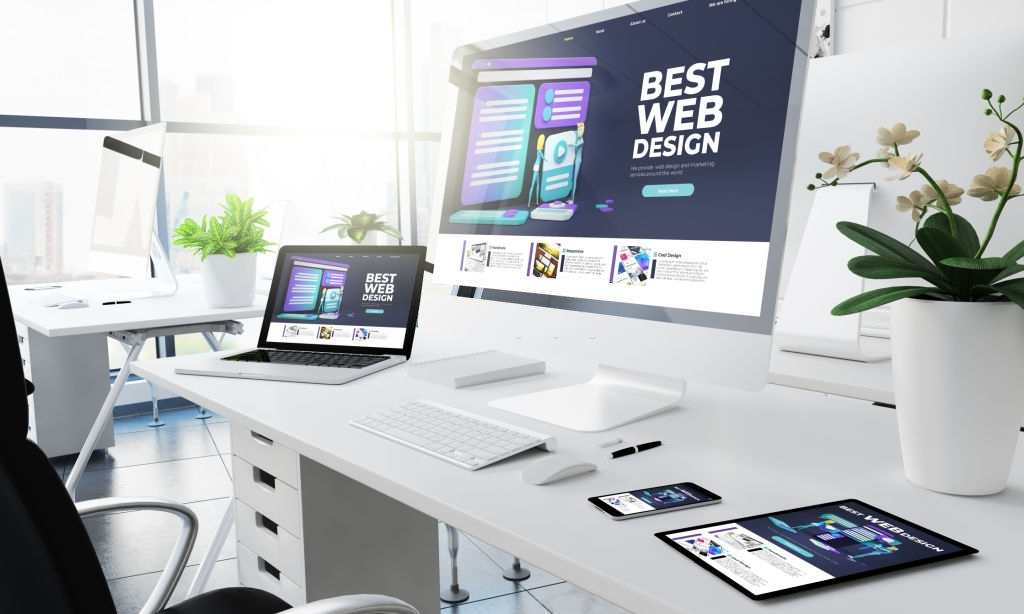Design Trends You Should Follow to Increase Conversion & Gain More Leads

Making a simple task complicated is common. Too frequent, It is always tempting when you are starting out, to want to do more, to show what you can do, what you have learned. But most of the time, it’s a costly mistake that most more experienced UX/UI designers will avoid.
Sticking to simple designs will not only improve the graphical vision that users will have of your site, but it will also improve their conversion rate on it.
But how exactly should you do it? The answer to this question is user-centered design. To put it simply, the user-centered design is a set of principles that allow you to design by focusing on the needs, expectations and constraints of the users you want to reach.
Design Trends You Should Follow To Increase Conversion & Gain More Leads
By focusing on how your users interact with your site, you can significantly improve its structure, its interface and its content in order to make them more attractive, organized and above all useful.
Eliminate Visual Pollution
Your site may be composed of visual elements, illustrations or other content that is of no help to your users. Look for them, find them, remove them. Yes, sometimes it’s easier said than done, but it’s important.

Make sure your content only shows what users need to see (and know) to get what YOU want. Remove unnecessary colors, irrelevant images, simplify the layout, and avoid links that add no value to your users’ experience. Favor strong visuals and if possible, use storytelling.
In short, eliminate all forms of distractions.
One of the best landing pages from the point of view of visual elements is that of Uber. Their headline is framed in a manner any user can relate to. The registration form is high up on the page and will definitely not be missed. The biggest reasons to become an Uber driver are also clearly mentioned.
Simplifying The Path To Conversion

As soon as they arrive on your site, your users embark on a journey at the end of which is the product they are looking for. For you, it is a journey towards conversion. Make this trip as short and as attractive as possible.
One of the best examples of this pointer is Codecademy. Their registration form is simple and above the fold with a bright purple CTA button. It also has a feature to log in with Linkedin, Facebook, Google or GitHub credentials that simplifies the path to conversion by lowering conversion barriers.
Clear And Conventional Content

Internet users don’t like to read, they don’t like it when there is too much text. They can be easily discouraged, overwhelmed and annoyed because of this. So be sure your text content is relevant and straight to the point. It should also be easy to read. Do not hesitate to decorate it with images or illustrations.
Dropbox’s website and homepage are the ultimate examples of keeping things simple and to the point. Their content is easy to understand and not too technical. It makes appropriate use of graphics and whitespace too.
Simplify Your Forms
Forms are barriers to conversion. And anyone who has already filled one can realize it. They can be boring, intrusive, sometimes even poorly constructed. But they are nonetheless essential to get it right.
It’s up to you to keep your users’ fatigue and frustration as low as possible. For example, you can reduce the number of mandatory fields and group content of the same type.

Your users also hate clicking on “Send” and seeing errors appearing in return. Be sure to give them all the necessary information when they complete the form, at each stage (highlight errors, explain the error, make suggestions, etc.).
An awesome example of a simple form is the Facebook signup form. It is a short and simple form that only asks for essential information. Plus, it’s flexible too. Users have the option to use either mail or mobile number for signing up.
Don’t Forget The Mobiles
More and more people are using their smartphones. However, the conversion rate on mobile is (and always has been) significantly lower than that of other platforms.
The reason?
A mobile site is designed to be a symbol of simplicity and accessibility, with a reduced proportion of text, and the optimal use of “white spaces” (spacing of content) for more readability. This is particularly true for “call-to-action” and forms.

Finally, on mobile, use only relevant, effective and above all optimized visuals so that everything is faster and more fluid.
The multinational pizza chain – Dominos – has a responsive mobile website with a simple interface that makes it easy for customers to seamlessly place their orders.
Be Subtly Persuasive
- Graphic design – By using professional photographs and illustrations, an intelligent color palette and a suitable layout, you will make your users want to spend time on your site, and thus increase your conversion rate.
A perfect example of this is Skype. The graphics on the website clearly communicate that the application works smoothly on different devices. All key features are also clearly depicted.
- Value proposition – Give a clear and direct explanation of what your product will bring to your users. They will be reassured and aware of being in the right place.
An example of a website with a good value proposition is Evernote. In just four words – Your notes. Organized. Effortless – it tells you exactly what their product is about.
- Call to action – Be sure to have well placed and visible “Call to action”. These buttons represent the end of the journey for the user, the moment when the visit turns into a purchase. Again, keep it simple.

A good example of this is Spotify. The moment you land on their homepage, their main goal of attracting premium customers is clear. This is highlighted by the fact that the CTA for premium membership is above the fold.
Final Thoughts
The objective of user-centered design is to facilitate actions that can lead to sales. Your content must speak for you, transmit precise marketing messages, answering the questions that your users are asking and meeting their needs.
You must keep your users active and engaged. Design for your users. They will reward you and your conversion rate will take off!